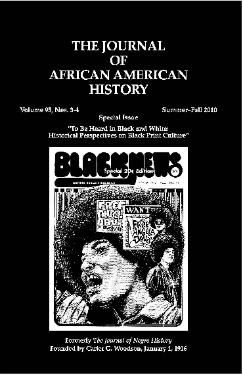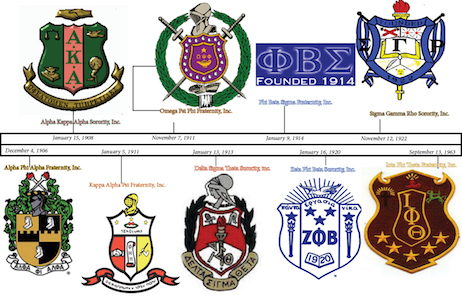 |
| Dr. Carter G. Woodson |
Well, today marks the end of Black History Month; so it seems fitting to profile its origins and its founder, in my final post for this year. I originally posted this in 2011; but given this year's theme on education, it seemed very appropriate to refresh it and re-publish it.
For the past three years, I have written and published a daily Black History Month blog post, during the month of February. On a personal note, I hope that you have enjoyed seeing Black History through my 'lens'. To be honest, it has actually been rather hard work to research and write them each day - especially after I have spent a very long day at the office, and also often had a charitable/extra-curricular activity, after work. However, it has been thoroughly enjoyable because I have learned so much; and I feel that these stories need to be told to new audiences. For those of you who have read the blog posts, commented on them (here, or on Facebook), ‘liked’ a post on Facebook, become a ‘Follower’, forwarded the link to friends and family, or sent me an email with your own thoughts or congratulations, I truly thank you, and am humbled by your response and encouragement.
I now feel as though I need to move onto the next stage with the blogs, so today's post will be my last. There will be no blog next year. Many of you have continued to suggest that I publish a book of my posts; so watch this space, because I will most likely do that!
Remember that Black History is everyone’s history; and it is not just for one month. It’s for life. Thanks again! Zena
For the past three years, I have written and published a daily Black History Month blog post, during the month of February. On a personal note, I hope that you have enjoyed seeing Black History through my 'lens'. To be honest, it has actually been rather hard work to research and write them each day - especially after I have spent a very long day at the office, and also often had a charitable/extra-curricular activity, after work. However, it has been thoroughly enjoyable because I have learned so much; and I feel that these stories need to be told to new audiences. For those of you who have read the blog posts, commented on them (here, or on Facebook), ‘liked’ a post on Facebook, become a ‘Follower’, forwarded the link to friends and family, or sent me an email with your own thoughts or congratulations, I truly thank you, and am humbled by your response and encouragement.
I now feel as though I need to move onto the next stage with the blogs, so today's post will be my last. There will be no blog next year. Many of you have continued to suggest that I publish a book of my posts; so watch this space, because I will most likely do that!
Remember that Black History is everyone’s history; and it is not just for one month. It’s for life. Thanks again! Zena
~~~~~~~
Black History Month began as Negro History Week in the second week of February, 1926, to honor the birthdays of President Abraham Lincoln and abolitionist, Fredrick Douglass. It was founded by Dr. Carter G. Woodson, African-American historian/educator, author and journalist.
 |
| President Abraham Lincoln |
 |
| Frederick Douglass |
Carter was born the son of freed slaves, in December, 1875, in New Canton, Virginia. As a teenager, Carter helped his family to make ends meet by working as a sharecropper, miner and garbage truck driver. This meant that he was not able to attend school on a regular basis, so he educated himself until the age of 20, when he was finally able to attend Douglass High School Fayette County , West Virginia Berea College Kentucky Fayette County
 |
| A young Carter G. Woodson |
 |
| Students at Berea College |
A few years later, Carter was sent, by the U.S. War Department, to the Philippines University of Chicago Africa , Asia and Europe , and studying for a short time at The Sorbonne, in Paris , France Paris University Howard University Washington DC College of Arts
 |
| University of Chicago |
 |
| Howard University |
By this time, Dr. Woodson had observed that African-American history was either ignored or misrepresented in most textbooks; so he began extensive research. In 1915, he published his first book, The Education of the Negro Prior to 1861. That same year, in Chicago
 |
| 2002 edition when renamed to The Journal of African-American History |
 |
| 2010 edition |
However, Dr. Woodson’s commitment to African-American history, and to improving the lives of African-Americans, had not waned. He decided to commit the rest of his life to his research – often working 18 hours per day and accumulating a collection of thousands of artifacts and publications. During the 1920s, Dr. Woodson received tens of thousands dollars from several, White philanthropists to fund the ASNLH’s various efforts.
In 1926, Dr. Woodson wanted to formalize his commitment, so he lobbied schools and organizations to participate in a special program to encourage the study of African-American history, which began in February 1926, with Negro History Week. By the early 1930s, Dr. Woodson relied upon Black communities throughout the country to maintain his organization’s activities; but he had many detractors – White and Black – who did not believe that African-American history should be separately recognized or celebrated. Dr. Woodson was not to be deterred. In 1937, he created The Negro History Bulletin to be used as a study guide for Negro History Week (and beyond) and throughout the 1930s and 1940s, Dr. Woodson spoke at countless elementary and high schools, Negro History Week events and at the graduation ceremonies for many Historically-Black Colleges and Universities (HBCUs).
 |
| Negro History Week Bulletin with comments from President Truman |
In the decades which followed, mayors of cities across the country began issuing annual proclamations recognizing Negro History Week. By the late 1960s, thanks in part to the Civil Rights Movement and a growing awareness of Black identity, Negro History Week had evolved into Black History Month across the country. President Gerald R. Ford officially recognized Black History Month, in 1976, calling upon the public to "seize the opportunity to honor the too-often neglected accomplishments of Black Americans in every area of endeavor throughout our history." Since then, every American President has designated February as Black History Month (which is often now called African-American History Month) and endorsed a specific theme. This year’s theme focuses on President Abraham Lincoln and the 150th Anniversary of the Emancipation Proclamation (click here to read President Obama’s Proclamation for 2013).
Dr. Woodson worked tirelessly until his sudden death at the age of 74, in 1950. He is buried in Lincoln Memorial Cemetery in Maryland
Sources: Wikipedia, Biography Channel, History Channel, About.com, CNN, Google Images










































.jpg)
















